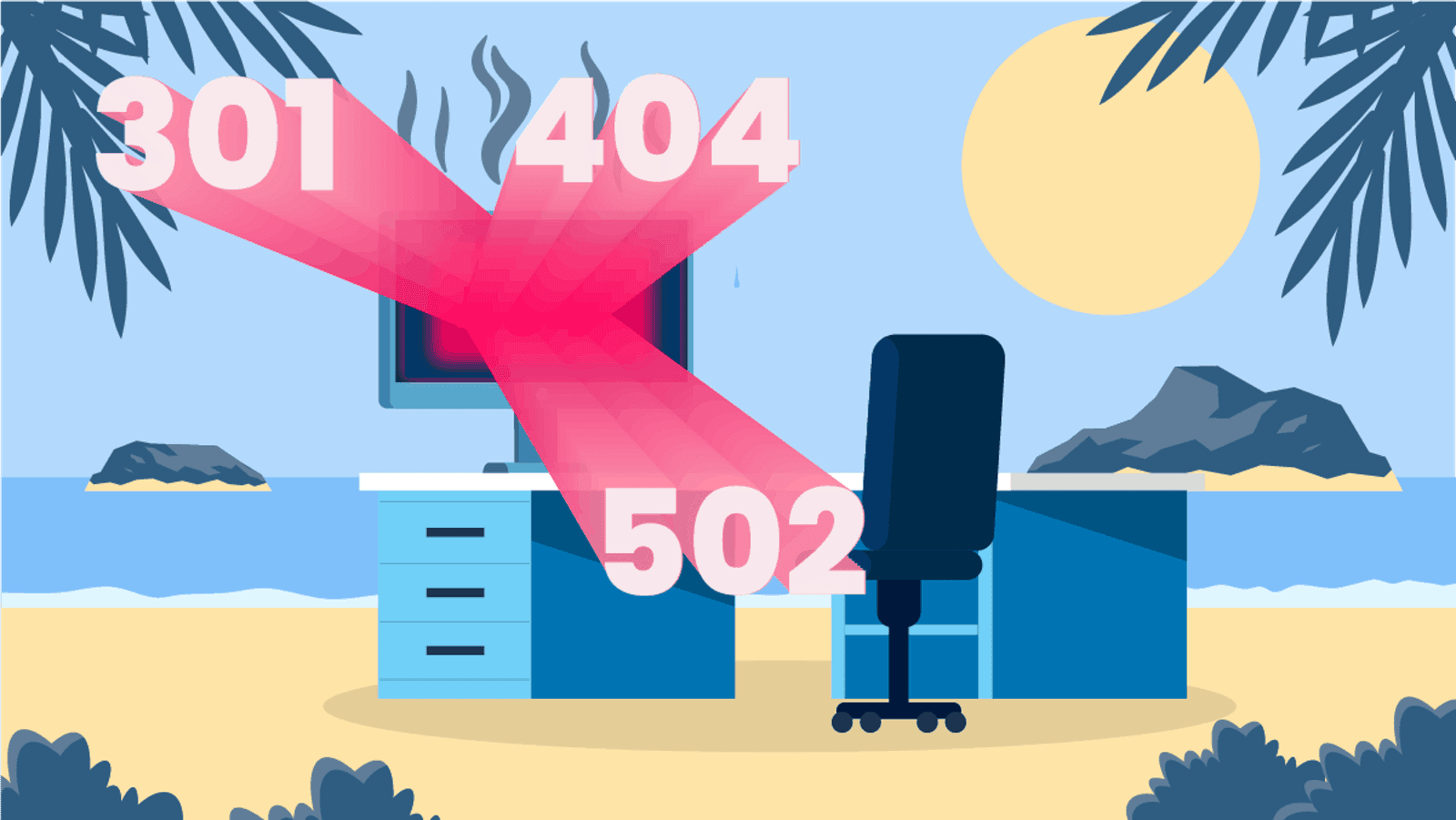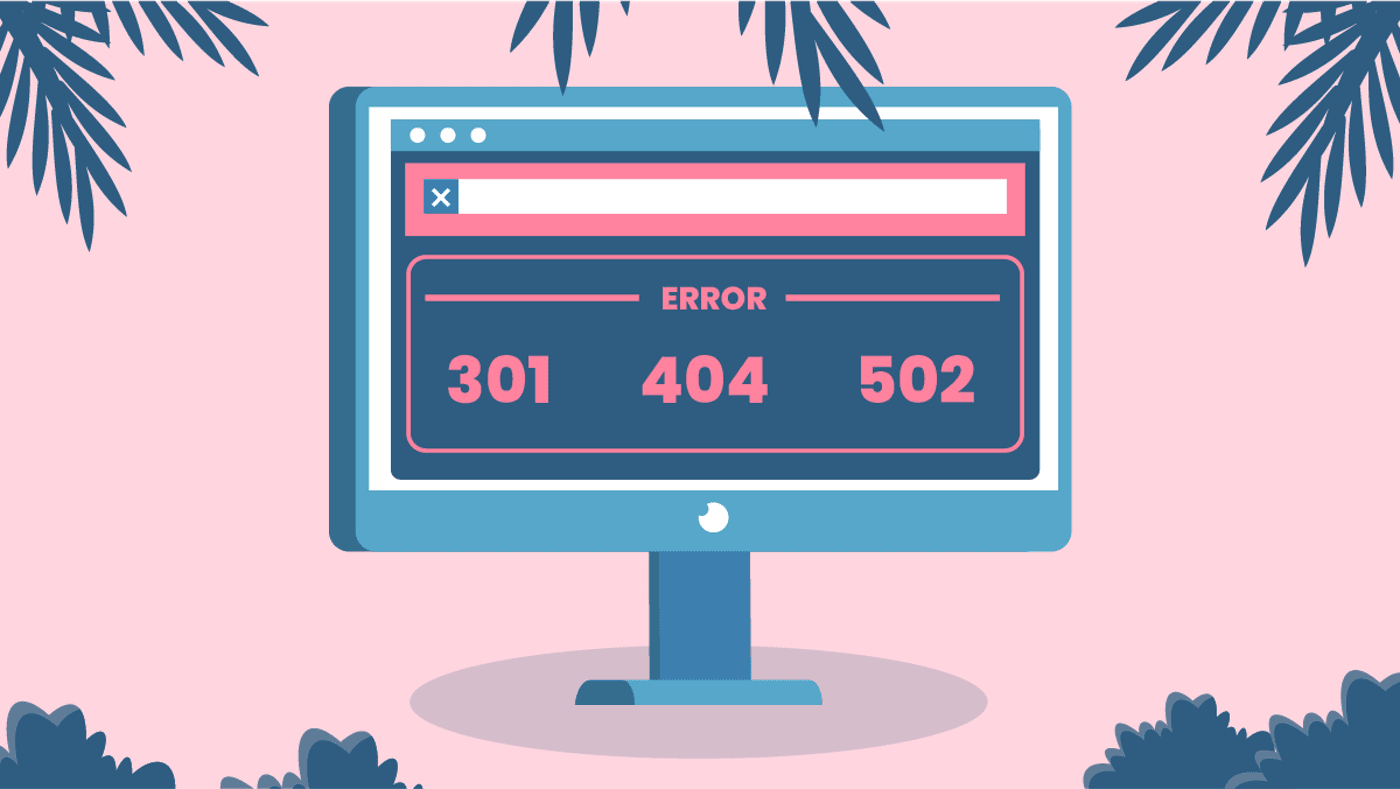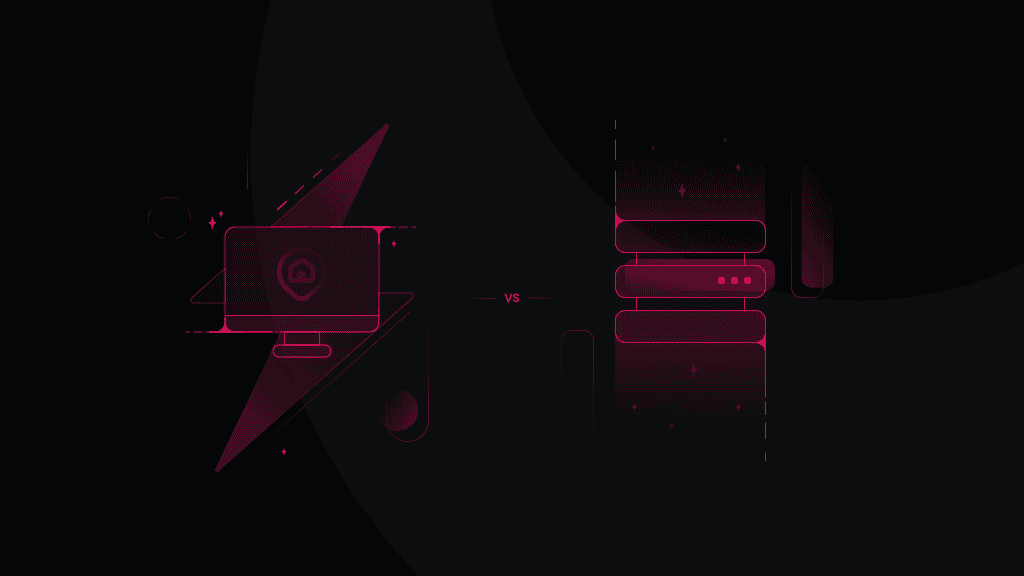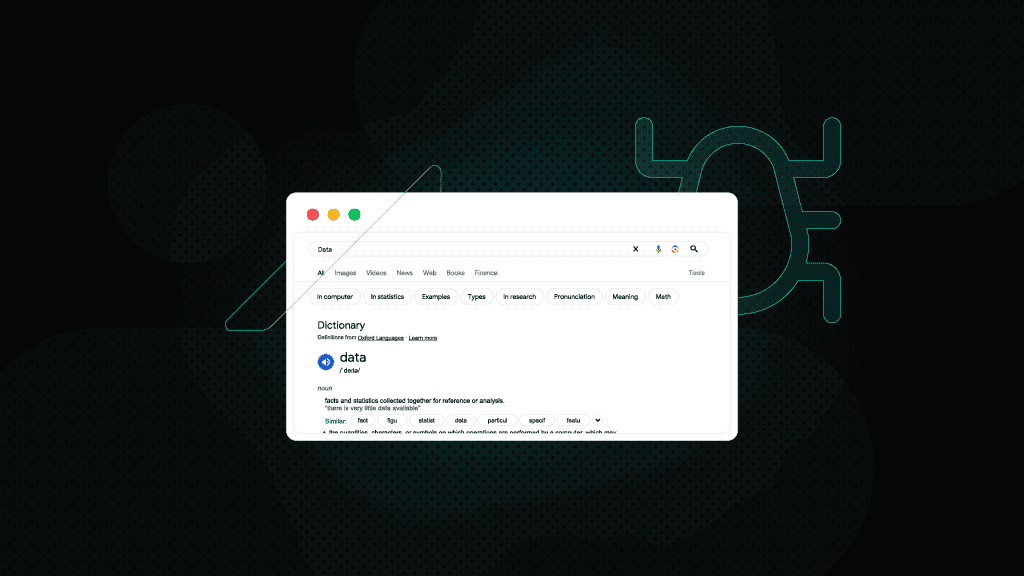Stuck with Proxy Error code? Simple Ways to Solve Each of Them [VIDEO]
Got stuck with the annoying proxy error codes? Chances are that you ended up with undesirable 404, 407, or 503 status codes at least once, and it wasn't a pleasant experience. But it may seem frustrating only from the first glance – a better understanding of what you are dealing with helps find the solution quickly. Think this: the idea of the status code is to indicate the problem, so you won't need to.
What is a proxy error?
Proxy errors, aka HTTP(s) error codes, indicate the status of your response sent to the web server via a proxy. The way the server communicates with a browser is very structured for both parties to understand what's going on. We usually face proxy error codes when we cannot access a specific website or URL. There are plenty of reasons that might cause such an unpleasant situation, and luckily we have a looot of codes to help us sort it out. It was a bit sarcastic, but those three digits codes actually help start your investigation. We have a user-friendly guide for you if you are not very familiar with 404, 502, and other status codes’ meanings.
Why does it happen?
In simple words, you have ended up with a proxy error code because the specific content can be reached only by a particular audience, and clearly, you are not on the VIP list. But shouldn't you get access to the restricted content because you already use proxies? Thing is that probably there is a problem with the adequate proxies’ management during crawling or scraping activities. Let's dig more into the types of proxy error codes and what problems they indicate.
Error codes’ classes
HTTP status codes are classified into five groups to make it easier to grasp the initial problem. All the codes contain three digits, and the first one represents the class to which the code belongs. You might face 4xx and 5xx status codes more often, so feel free to jump right to them if you are searching for them. If not, let's go straight to the proxies’ error codes.
1xx – Informational Response. Codes starting with 1 will probably pop up on your screen quite rarely - the primary function is to show that the server is still processing your request, so it is just asking you to be more patient for receiving the final result.
100 – Continue. This code shows up when a part of the request has been received, and the user should proceed with the remaining submission. The initial request header should include Expect:100-continue. After receiving a 100 error code, it's time to send the remaining request body. This way you’ll avoid oversending requests if the header is rejected in the "Expect" phase.
101 – Switching Protocols. The code indicates that the browser requested a switch in the communication protocol, and the server approved the request.
102 – Processing (WebDAV). If you see this one, you have probably made a request containing many sub-requests that take longer to be completed. Do not assume that the request is lost – better give your server more time to digest your complex request.
103 – Early Hints. Your server just took a well-deserved break. Who doesn't need that? While the web server hasn't started processing your request, you can still use your browser.
2xx – Successful Status. As can be noticed from the title, these are the most positive status codes. This group of responses indicates that the request was received, understood, and accepted. 200 is the standard reply to confirm successful submission. This HTTP status code shows the well-functioning website. Sounds promising, right? Just don't rest on your laurels too long - any 2xx code, except 200, may show some error.
201 – Created. The server fulfilled your request and created a new resource based on that. The most common example would be a new page with the user's logins.
202 – Accepted. This short message means that the request was received but is still being processed, and the answer is still unknown. Fingers crossed that your submission will be successful, but at this point, there are no guarantees.
203 – Non-Authoritative Information. Your request has delivered a result but not from the original server. The received response probably was collected from 3rd parties or local copies and modified by a transforming proxy.
204 – No Content. The server successfully processed the request, but there is no available content. Try to update your request to unlock the treasure.
205 – Reset Content. This time the server asks to reset the provided information. For example, you have filled and submitted the form, and the server is now asking the browser to clear it out.
206 – Partial Content. You have probably requested a range of files or used multiple streams; therefore, you ended up receiving only a part of possible content.

3xx – Redirection Status Error. Status codes starting with 3 indicate that some additional action from your side is needed to comply with your request. The submission should end with a 2xx code in the ideal world, but it requires some redirection for now.
300 – Multiple Choices. This code sends you a message that several responses are possible, so better pick one to end up with the necessary one. Browser or crawler cannot choose the right one, therefore asks you for involvement in identifying the right resource. Check HTTP headers and ensure that the URL ends up in a single location.
301 – Moved Permanently. The most popular one from all the 3xx classes means that any reference will be redirected to the new URL instead of ending up in the original one. Most search engine browsers cannot proceed with more than five redirects for a single link and alert you with a message "Too Many Redirects." If you are the website owner, better fix it to avoid an infinite loop.
302 – Found (Previously "Moved temporarily"). It means you have been redirected to another URL instead of ending up in the original URL.
303 – See Other. This status code indicates that the resource you are looking for is located in another URL address. You should use another URI (Uniform Resource Identifier) with a "GET" request to reach it.
304 – Not Modified. This code sends a message that the response hasn't been modified since the last time it was requested. This status code can help reduce the crawler's load time since there is no need to recheck the results.
305 – Use Proxy. This one is pretty self-explanatory, right? If you see the 305 code, you have to use a proxy server to access the resource. With the code, you can also receive the proxy server's address, but some browsers, like Mozilla, do not display such information due to security reasons.
307 – Temporary Redirect. The code indicates that the resource is switched temporarily to another URI - the header should mention the location. Since it is temporary, the future request should end on the original URL.
308 – Permanent Redirect. Other than 307, this is a permanent move of resources to the new URI. The future resources should also link to the latest version. Both 307 and 308 are pretty similar to 301 and 302. However, the main difference is the HTTP method, which does not change with the new URL.
4xx – Client Error. As you may have already guessed, this type of code indicates a problem on the client-side. If you are a user, there's not so much you can do, but if you are a website owner, make sure to avoid these - your SEO won't show great results if you leave 4xx codes unattended.
400 – Bad request. Very generic status code which shows you that the server cannot respond to your request, but the cause is not defined. There can be plenty of reasons why you end up with 400 codes. It may be syntax or incorrect formatting. Recheck your request and include the URL before trying one more time.
401 – Unauthorized error. We bet you met this security guard at least once while trying to access your social media accounts through another device. The code implies that some authorization is needed to fulfill the request.
403 – Forbidden. This time the server identified you but did not allow you to enter the club. You can still end up there; just change your proxy location or ports. Check if your proxy is working correctly to be 100% sure that this code won't pop on your screen again. Here's the tutorial for that.
404 – Not found. Probably the most common and, let me guess, the most annoying one. "Not found" error code means that the website you are reaching doesn't exist. Crawlers or bots cannot get to the site even if your initial request is correct. If you end up with 404, the URL is incorrect, changed, or just removed. This error code especially catches SEO specialists' attention since it can hurt the health of the page quite a lot. Even though 404 is super-annoying, to some people, it turned out to be an excellent opportunity to grow revenue while increasing organic traffic.
405 – Method Not Allowed. The server has identified your request method but has disabled it. Simply the browser cannot access the page you have requested. Other than in the 404 cases, the server knows about the page's existence. Recheck your URL twice before repeating the request.
406 – Not Acceptable. The server cannot find any answer which would match headers. The problem can be related to a URL and recent updates. With this error code, the server should present you with a list of possible results to pick the most accurate ones.
407 – Proxy Authentication Required. You guessed it right - some proxy authentication is needed to perform the request. Most probably, the username or password is incorrect. The code occurs when the crawler does not have the proxy provider, or the IP has not been whitelisted. The easy solution is to cross-check your proxy settings by including all the IPs you are planning to use, enter proper credentials, and include the requested information to proceed.
408 – Request Timeout. The site you are reaching out to did not respond to a request in time; therefore, the server is timed out. Slow internet can cause such a situation, so try to refresh the page. If it is not the case, try changing the session type or endpoint.
409 – Conflict. This time the "tension" is between a request and the current state of the resources. In most cases, the content of the given response is enough for a user to understand the cause and quickly fix it.
410 – Gone. You most likely end up with this code if the target resource is deleted or the server can no longer reach it. The situation is similar to 404, but this time it is permanently gone from the original place and has no following address.
411 – Length Required. This status code implies that the server rejected the request because the content length does not meet the requirements.
412 – Precondition Failed. The code occurs if the preconditions required to perform the request have been filled falsely. This request contains "if.." regulations that require you to complete it. Otherwise, you will end up with a 412 error code.
413 – Payload Too Large. The server is refusing to process the request since it is too large. Maybe you have tried to upload "heavy" files? Try to meet the file size requirement and try again.
414 – URI Too Long. The server is unwilling to proceed with your request since the URI is too long. It can also indicate that the server is suffering an attack, aiming to identify the potential security holes.
429 – Too Many Requests. This proxy error code shows that the same IP address has already made too many requests during the period. In other words, your behavior starts reminding the bot rather than a single individual. Luckily, we have an easy solution for this - using rotating proxies’ sessions will help solve the issue.

5xx – Server Error. Number five clearly states that the problem is on the server's side. Everything is fine with your request; you "called" the server successfully; it just didn't pick up to answer you due to internal issues. Try rotating IPs or changing their type. To minimize such proxy error, use residential proxies. They are more reliable in this case.
500 – Internal Server Error. The server stopped responding due to an internal bug. Try the request a bit later.
501 – Not Implemented. The server cannot recognize your requesting methods; therefore, it cannot fulfill your submission correctly. In this case, there is not much you can do except contact your server to fix the issue. But before that, of course, try to reload the page and clear the cache.
502 – Bad Gateway. If you are not a newbie in the proxies world, you have probably faced this one at least once. It sometimes happens during data scraping, when the server acts as a proxy to another server and receives an invalid response from another server. Probably the connection was disrupted, or it has been spotted as a bot. The quick solution is to rotate the IP. However, if you are using datacenter proxies, this may not help. It is possible that the site you are reaching blocks datacenter proxies since they are easier to recognize. In this case, change the type of IPs you are using.
503 – Service Unavailable. The server is overloaded or under maintenance and cannot process your request. Usually, it is a temporary issue, so try connecting later.
504 – Gateway Timeout. This code pops up when the server acting as a proxy or gateway cannot deliver the results to another server on time. Check your server connection and retry your request.
505 – HTTP Version Not Supported. This one is pretty self-explanatory - your request does not match the HTTP protocol version. Therefore the server cannot respond.
507 – Insufficient Storage. The server has run out of disk space and is unable to store the representation of the request. You can solve the problem by upgrading your hosting plan or optimizing the database settings.
510 – Not Extended. Further extension is required to proceed with your request.
511 – Network Authentication Required. This proxy error code means that you need to authenticate your network to receive a response. It can be related to the accepting terms, for example, while trying to connect to WiFi at the airport.
522 – Connect timeout. The proxy connection timeout, so you need to reconnect again.
525 – No Exit Found. The server cannot deliver the results due to some indicated unsuitable parameters. Try to change them or try again later.
How to solve error codes?
Proxy error codes help you indicate the problem and search for specific solutions. When the code is triggered, the most popular solution is to repeat the request, switch IP, check the connection, and simply change the network. There is no perfect pill for every error, but these could be the first steps you should try.
Improve your proxy game
1. Try different type of proxies
A pretty obvious solution, but this may be your golden ticket. We love datacenter proxies because of their speed and stability, but they are easier to recognize by servers. To make your browsing more human-like, use residential proxies. The big chances are that you will stop getting 502 proxy error codes, and the general user experience will be better. Eager to try? We have different residential proxies plans to bring your browsing to the next level.
2. Increase the delay between requests
Let the server absorb your request without burnout. Or, if you are not prepared to settle down, especially if you are scraping websites for SEO purposes, try our residential proxies. We offer flexible, traffic-based plans and dope performance - think 99.99% uptime and 0.61s average response time. But don't take our word for granted - try any of our plans, and if you are not happy with that, we offer a 14-day money-back option (terms apply).
3. Improve IP rotation
Simple solution, but not staying too long with one IP address can help you avoid being restricted or blocked. Guess what the great news is? We offer advanced proxy rotation. To make the setup easier, use your Chrome Proxy Extension.
Still not sure how to fix the proxy error issue?
I hope that this ultimate guide unlocked the secret of proxy error, and now you know where to start when facing the three-digit code. If you still need someone to discuss it, the help is on the right bottom corner. Remember, our round-the-clock customer support team is always ready to answer your questions and improve your proxy using experience.
About the author

Mariam Nakani
Say hello to Mariam! She is very tech savvy - and wants you to be too. She has a lot of intel on residential proxy providers, and uses this knowledge to help you have a clear view of what is really worth your attention.
All information on Smartproxy Blog is provided on an as is basis and for informational purposes only. We make no representation and disclaim all liability with respect to your use of any information contained on Smartproxy Blog or any third-party websites that may belinked therein.










